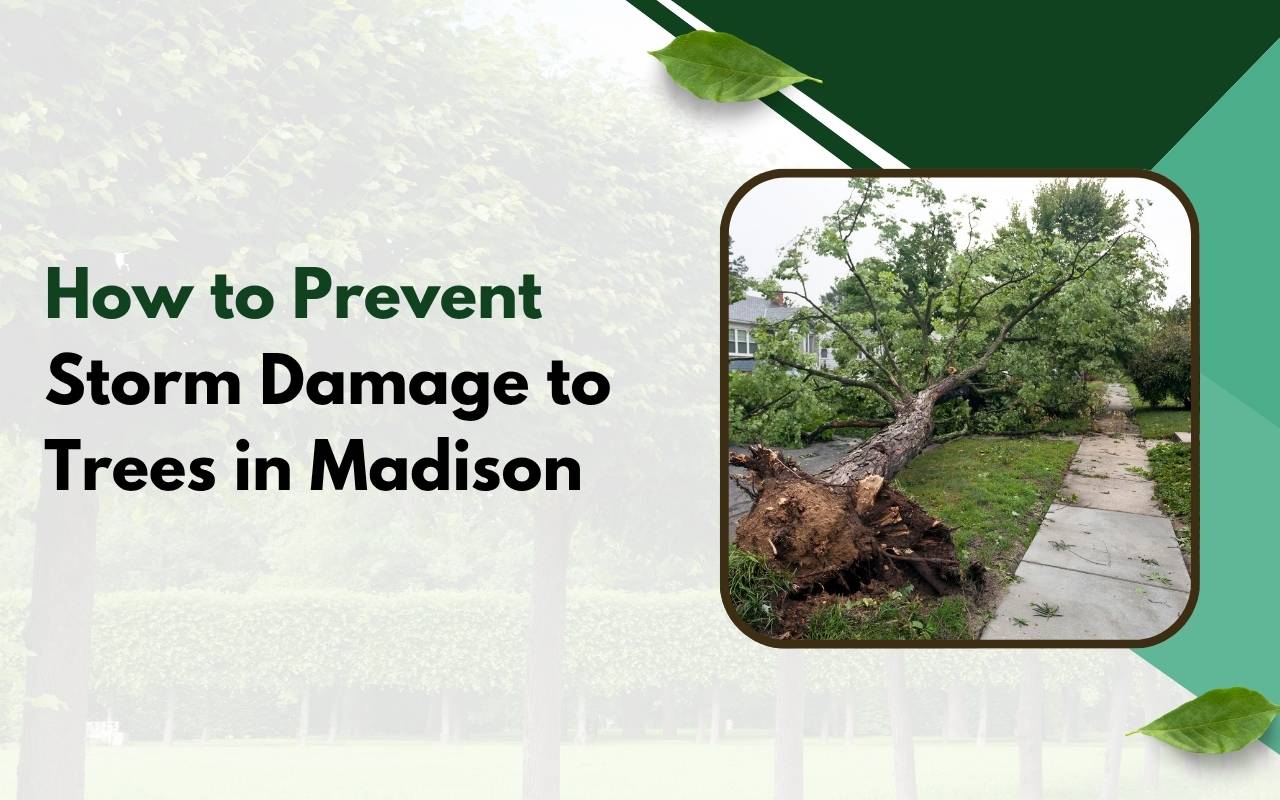
As storm season approaches, Madison’s beautiful trees face challenges. Homeowners and property managers can reduce risks with proactive care. Techniques like cabling, mulching, and regular inspections help prevent storm damage trees Madison while keeping the community safe and green.
Importance of Storm Damage Prevention
Storm damage prevention protects both private property and public spaces. High winds and heavy rains often destabilize roots or break branches. A falling tree may damage vehicles, homes, or even endanger lives. Preventing these outcomes requires early preparation and consistent action.
Beyond property concerns, healthy trees enrich communities. They improve air quality, capture carbon, and provide spaces for gathering. By prioritizing prevention, residents ensure safety while preserving Madison’s natural charm. Therefore, proactive care benefits both people and the environment.
If you are concerned about tree safety, consider reaching out to our contact page for professional help.
Proactive Tree Care Techniques
- Prune regularly to encourage balanced branch growth and reduce storm stress.
- Manage soil health with compost and organic amendments for stronger roots.
- Water deeply during dry seasons to sustain vitality before storms arrive.
- Select appropriate tree species for Madison’s climate and site conditions.
When homeowners adopt these practices, they actively help prevent storm damage trees Madison and ensure tree resilience.
Cabling for Tree Support
Cabling reinforces weaker branches against wind stress. By redistributing weight, arborists reduce the chance of splitting or collapse. Proper placement depends on tree species and branch angles. Regular inspection ensures the system remains effective over time.
When combined with other maintenance strategies, cabling becomes an essential step to prevent storm damage trees Madison, securing both landscapes and community areas.
Proper Mulching Methods
- Spread 2–4 inches of mulch around the base of the tree.
- Keep mulch a few inches from the trunk to prevent rot.
- Refresh mulch yearly before storm season for consistent protection.
Mulching not only conserves moisture but also stabilizes soil, strengthening roots. These steps help prevent storm damage trees Madison during heavy rainfall.
Regular Tree Inspections
Professional inspections identify hidden vulnerabilities before storms strike. Arborists check for cracks, pests, root heaving, or fungal growth. Homeowners then prioritize pruning or soil care to address weaknesses. This ongoing attention reduces risks and supports healthier urban canopies.
Identifying Potential Tree Problems
Early detection matters. Warning signs include thinning canopies, dead branches, bark peeling, or leaf discoloration. Sometimes internal decay remains unseen, making expert tools and assessments necessary. Acting early prevents bigger problems and lowers storm-related hazards.
Community Safety and Well-being
Well-maintained trees protect neighborhoods. Dangerous limbs can fall on utility lines or block streets. Community-led programs foster cooperation between residents, arborists, and municipal services. Together, these efforts support safety, beauty, and resilience in Madison’s shared spaces.
To maintain safe and thriving landscapes, you can explore our tree trimming services in Madison.
Preserving Madison’s Urban Forest
Madison’s green identity depends on careful tree preservation. Planting diverse species, maintaining biodiversity, and supporting replanting programs ensure future generations enjoy healthy canopies. Policies that encourage inspections and proper pruning also play an important role in long-term sustainability.
FAQs About Tree Storm Damage
How often should trees be inspected before storm season?
At least once a year, and ideally before storm season, to detect risks and protect property.
Can mulching really protect trees during storms?
Yes. Mulching stabilizes soil, reduces erosion, and supports root health, all of which enhance storm resistance.
What types of trees are most vulnerable to storm damage?
Trees with shallow roots, weak branch structures, or existing decay are most vulnerable during high winds and heavy rains.
Is cabling safe for older trees?
Absolutely. Cabling, when installed by professionals, supports aging trees and reduces limb failure risks.
Why is community involvement important for tree safety?
Shared knowledge and coordinated actions ensure more trees are cared for, reducing hazards and preserving neighborhood beauty.
Mitigating Risks of Falling Branches
- Remove dead or cracked branches promptly.
- Thin crowded canopies to reduce wind resistance.
- Prune near utility lines with professional guidance.
Directional pruning techniques lower the risk of branches falling during storms. These targeted actions prevent storm damage trees Madison and improve safety for pedestrians and vehicles.
Ensuring the Longevity of Madison’s Trees
Protecting Madison’s canopy requires proactive care, cabling, mulching, and inspections. Combined, these strategies strengthen trees against storms and preserve community beauty. By investing in prevention, Madison ensures a vibrant, safe, and sustainable urban forest.
To take the next step in protecting your trees, learn more about our tree removal services in Madison if needed.
